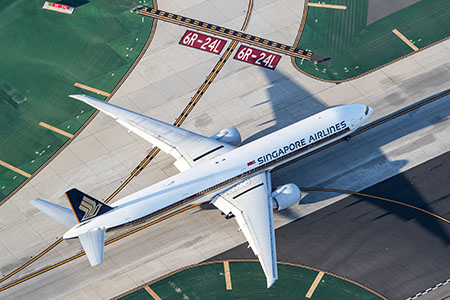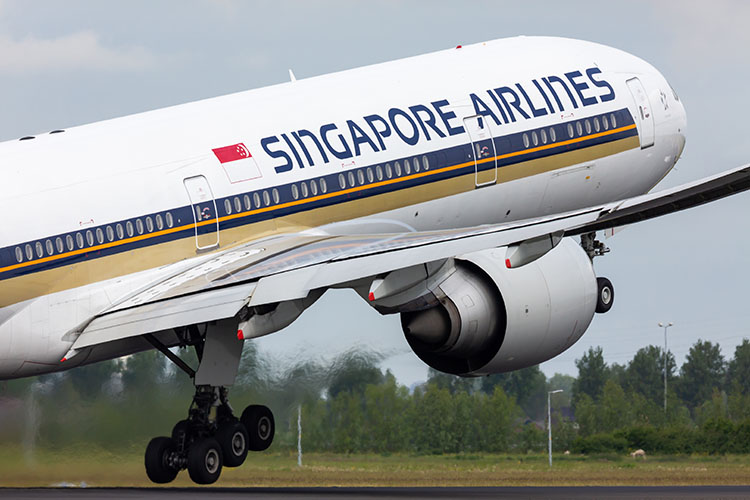
How Singapore Airlines is coming back stronger than ever
By Jeremy Bowen, CEO of Cirium
Among international air travelers, the Singapore Airlines brand has long been synonymous with quality and excellence. It offers passengers new planes, lavish premium cabins, incomparable onboard hospitality, and a home airport famous for its amenities.
Recently, however, the company has faced tougher global competition, not just from premium rivals like Gulf carriers but also low-cost carriers. As a result, profit margins during the 2010s were mostly underwhelming, in contrast to earlier decades, when it routinely ranked among the world’s most profitable airlines. That said, Singapore Airlines is now producing very strong earnings again amid the post-Covid recovery.
This year’s excellent results are getting a boost from the carrier’s booming cargo business.
| ULTIMATELY THOUGH, WHAT’S MOST IMPORTANT TO SINGAPORE AIRLINES AND ITS LONG-TERM EARNINGS POTENTIAL IS THE LONG-HAUL PREMIUM MARKET. |
Data from Diio, Cirium’s industry-leading airline planning system, makes that clear. It shows Singapore-London Heathrow as the carrier’s single busiest route measured by available seat kilometers (ASKs). In total, Singapore Airlines flies to 14 destinations in Europe, accounting for almost 30% of all its ASKs. To better compete in Europe, especially for premium travelers, it flies the latest widebody technology, repeatedly refreshes and improves its inflight product, and operates joint ventures with Lufthansa and SAS.

The airline’s longest routes, though, are across the Pacific to North America. The region currently accounts for nearly 15% of its total ASKs, compared to just 9% ten years ago. That’s even as the carrier’s total ASKs today (including Scoot and the retired brands Tigerair and SilkAir) are 8% fewer than they were in 2012.
| PUT ANOTHER WAY, TODAY’S SINGAPORE AIRLINES IS SMALLER THAN IT WAS A DECADE AGO (MOSTLY BECAUSE OF THE PANDEMIC), BUT TRANSPACIFIC JOURNEYS HAVE BECOME SIGNIFICANTLY MORE IMPORTANT TO ITS NETWORK. |
A major reason for this is the advent of new longer-range Airbus and Boeing widebodies capable of reaching more North American cities nonstop from Singapore. In 2010, Singapore Airlines flew to five airports in the region, but only two of these—Los Angeles and Newark—offered nonstop. They flew San Francisco via Seoul and Hong Kong, for example, and New York JFK via Frankfurt. Today, the airline serves six North American airports nonstop from Singapore, namely Los Angeles, San Francisco, Seattle, Vancouver, New York JFK, and Newark. It still serves Houston as well but via Manchester in the United Kingdom.

Not quite as far as Europe or North America, yet still requiring widebody range in most cases, are flights to Australia. This is in fact the largest country market for Singapore Airlines and Scoot, according to data queried using Diio’s Scheduled Dynamic Table. New Zealand is a substantial market as well, and the two countries combined account for 12% of total ASKs this year. Amplifying its presence in the region are partnerships with both Air New Zealand and Virgin Australia.
After Australia, the US, and the UK, the next largest country market for the Singapore Airlines Group is India, where it currently serves 13 cities nonstop from Changi Airport. This doesn’t include Vistara, an India-based airline 49% owned by Singapore Airlines. Of course, much of the Singapore Airlines/Scoot network remains within Asia. Pre-pandemic, mainland China and Japan were each responsible for more ASKs than even the US. Naturally, markets within the ten-country ASEAN region (which includes Singapore) are critical. Markets within Asia, however, are subject to heavy low-cost competition, which is why Singapore Airlines developed and continues to expand Scoot. The LCC’s busiest route by seats is Singapore-Bangkok, but it serves long-haul markets like Australia and even Europe (Athens and Berlin) too. Alliances are another tool that helps Singapore Airlines compete within Asia. It cooperates with Japan’s All Nippon, Malaysia Airlines, and Indonesia’s Garuda.
| ONE IMPORTANT STATISTIC THAT UNDERSCORES THE IMPORTANCE OF PREMIUM DEMAND TO SINGAPORE AIRLINES IS THE NUMBER OF PREMIUM SEATS IT FLIES AS A PERCENTAGE OF ITS TOTAL SEATS. DIIO SHOWS THAT NUMBER TO BE 15% IN 2022, COMPARED TO 11% IN 2019. |
The increase is driven by an expansion in premium economy seating. Importantly, these figures are larger when looking just at long-haul international flights. For just the airline’s flights that exceed 4,000 miles, excluding Scoot, nearly a third of all seats are premium. Business class seats alone are about 19% of the total, with premium economy accounting for another 13%. Less than 1% are first class. For all airlines worldwide, on flights over 4,000 miles, just 11% of seats are business class and 4% premium economy.

For Singapore Airlines, this dependency on long-haul premium demand is unlikely to change. According to Cirium’s Fleets Analyzer system, the company, including Scoot, had 97 planes on firm order as of Sept. 14, with options for another 44. Many of these future planes, including long-haul B777s, A350s, and B787s, will feature large premium cabins. It’s another way of emphasizing that Singapore Airlines remains committed to the long-haul premium market. That market is coming back and so is Singapore Airlines.



